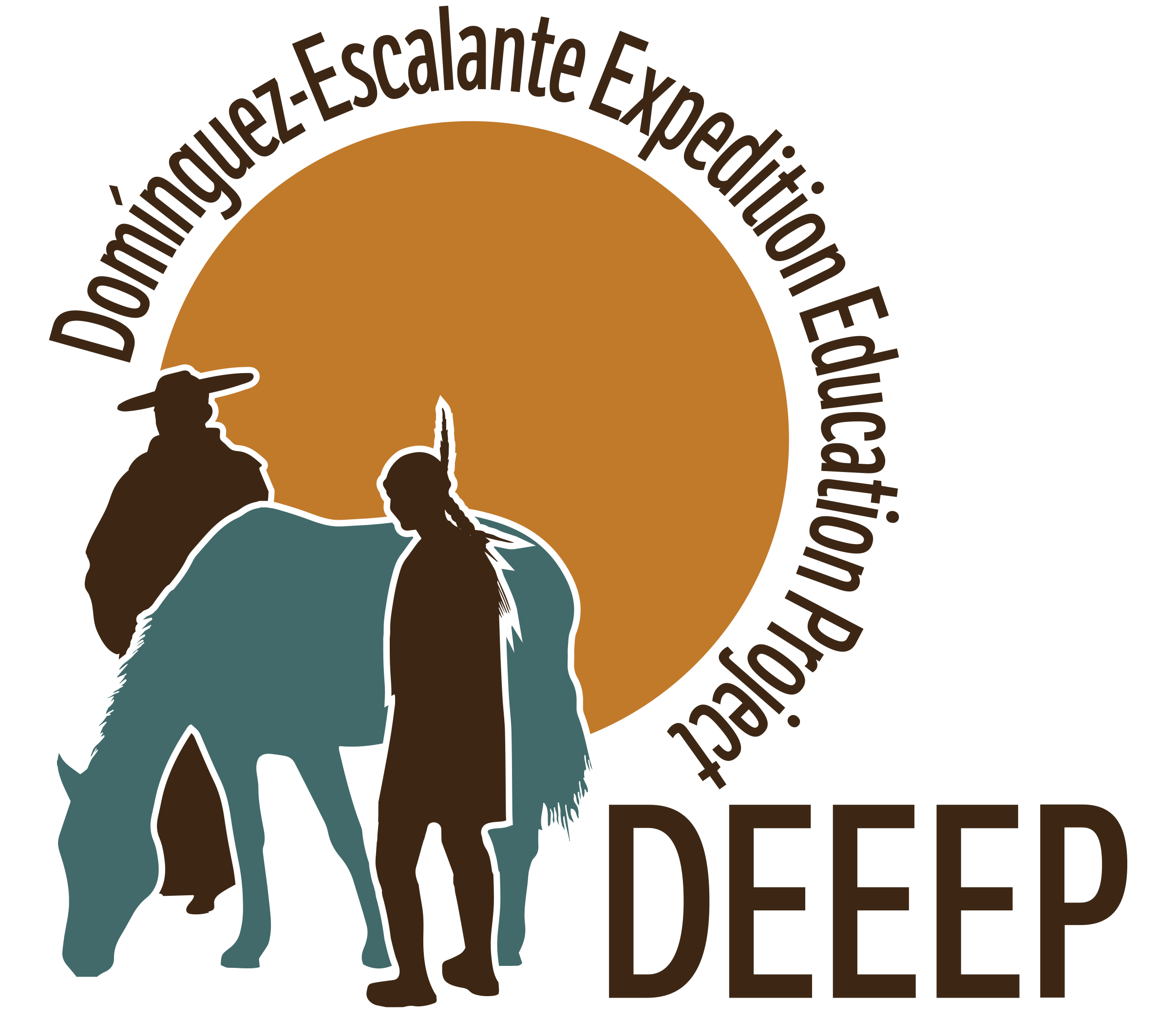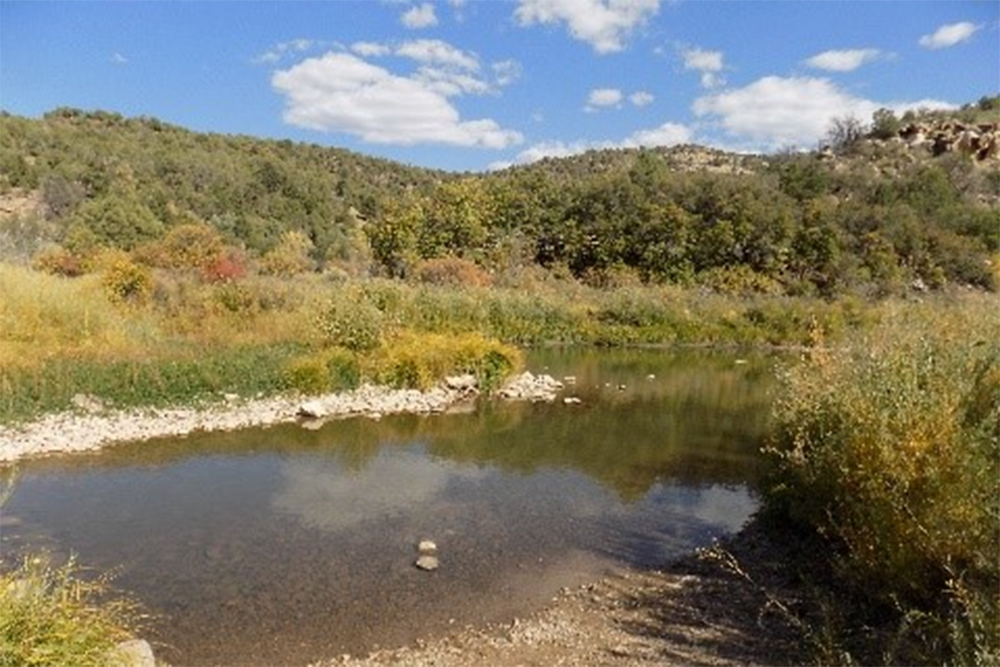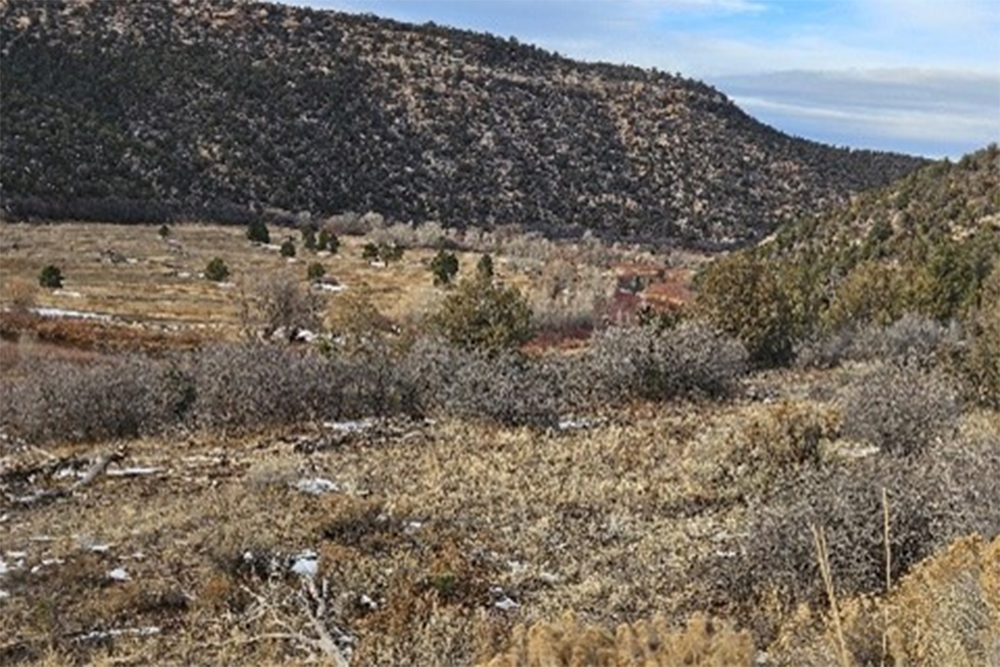August 14
Camp Name
The Ascension of Our Lady
Camp Name (Spanish)
La Asunción de Nuestra Señora
Brightness of the Moon
0%
Distance Traveled
8.25 leagues / 21.7 miles
Daylight
13 hours / 42 minutes
Water Resources
Dolores River
Journal Description for August 14th
On the 14th we set out from the meadow and Río de Dolores toward the north, and after a quarter league of travel we continued northwest for one league and to the northwest by west for five leagues over a rather troublesome stretch of sagebrush. We entered a tall and craggy canyon and, after going through it two leagues to the north, we arrived a second time at El Río de Dolores, which already here runs northwest. We crossed it twice within a brief space and halted by its western edge, calling the stopping-point, which is a brief meadow of good pasturage, La Asunción de Nuestra Señora.71“The Ascension of Our Lady.” This campsite was located on the west bank just opposite where Narriguinnep Creek enters the Dolores River east of Cahone, Colorado. There is a small level place here which would have provided the necessary forage for the animals, and firewood would have been no problem.
This afternoon we were overtaken by an Indo-Caucasian half-breed and an Indian of mixed Plains parentage from Abiquiú, the first Felipe and the second Juan Domingo by name.72Felipe and Juan Domingo were genizaros. In New Mexico a genizaro designated a non-Pueblo Indian living in more or less Spanish fashion. Some of them were captives ransomed from the nomadic tribes, and their mixed New Mexico-born descendants inherited the designation. Others were Pueblo Indians who had been expelled from the home village for being overly adaptive to Hispanic culture. In a word, detribalized Indians. So as to wander among the heathens, they had run away without the permission of their masters of that pueblo, with the desire of accompanying us as their excuse. We had no use for them, but, to forestall the mischief which either through their ignorance or through their malice they might do by wandering any further among the Yutas if we insisted on their going back, we took them on as companions. Today eight leagues and a quarter.73About 21.7 miles.
Scroll to the bottom to view photos.
Notable Event
Felipe and Juan Domingo joined the Expedition.Miller Report Summary
After breaking on August 14 the expedition traveled a short distance northward (downstream) before crossing again to the west side to leave the river channel by way of a wide valley. After gaining the high ground that separates the Dolores drainage from that of the Yellow Jacket-McEImo-San Juan, the Spanish party continued in a northwesterly directly, keeping a couple of miles east of present U.S. Highway 160. At a point some five miles southeast of the present town of Cahone the trail entered a “tall and draggy canyon” which led directly to the Dolores River. After fording that stream twice the leaders found good pasturage for a camp in a meadow on the west bank. Sometime during the afternoon of August 14 the company was “overtaken by an Indo-Caucasian half-breed and an Indian of mixed Plains parentage from Abiquiu.” These two men, Filipe and Juan Domingo, had run away from Abiquiu, had followed the expedition’s trail, and now wished to join the exploring party. Escalante makes it clear that the runaways were not welcome, but the padres reluctantly agreed to let them continue with the expedition. This raised the number to twelve men.DEEEP’s Field Notes
Copyright © 2024, DEEEP Colorado. All Rights Reserved.
August 14, 1776
By Tom West: DEEEP Team Member
On August 14, 1776, the Domínguez-Escalante Expedition left their camp on the north side of the Dolores River. They traveled north along the river valley for about six tenths of a mile before crossing the river and turning northwest to exit the river valley along what used to be an old road to Cortez from Dolores.
The expedition travelled on horseback about 16 miles in a generally northwest direction through troublesome sagebrush before entering a craggy canyon. They travelled for about 5 miles north in this rugged canyon before arriving again at the Dolores River. In a short distance the expedition was forced to cross the river twice before setting up camp near where today a road enters the river canyon and leads to a campground further north. River crossings always presented some danger. If the river was large, deep and wide, drowning was always a danger. Can you swim? Do you think the expedition members knew how to swim? Smaller rivers offered the danger of quicksand and slippery rocks where a horse could get caught in the sand or slip and stumble or fall. Later in the expedition the Spaniards were faced with some of these hazards and near drowning in the Colorado River.
This group of hearty travelers rode for nearly 22 miles through a dry brush-filled route before setting up a camp with plenty of pasture for their animals and water for all. Later in the day two weary travelers joined them. They had run away from a New Mexico village and were not welcome although Domínguez and Escalante decided they were untrustworthy, and it would be better to have them join them so they could keep their eye on them. They would have been unwelcome since two more people would help deplete their limited food supplies.
In August, it can be dry and dusty with pesky flies, gnats and other biting bugs that would make the trip uncomfortable at best. Try to imagine how hot, dusty and thirsty you might be on such a journey. How the sagebrush would scrape and scratch against your skin. Horseflies may have been biting your horse and make it constantly shake its head or rub against the brush. What a relief it would be to get off your horse, splash in the river to cool off. Then there would be the chores to care for the livestock, prepare a camp, gather firewood for cooking and keeping warm on cool August nights in the high desert of the area. While it can be baking hot during the day, once the sun descends in the west, the temperature can drop and for a while, the bugs come out and are a real nuisance. After eating, you are more than ready for sleep.
The next day, an early morning will come all too soon for another day of camp chores, riding to a new destination not knowing the best way to go and hoping there will be water. Can you imagine taking a four-month trip today not knowing exactly how to get to where you were going and having to find water along the way? When you look around there is this river and steep canyons. If you leave the river, where will you find water. No one has told you where water can be found once you leave the river. Have you ever been really thirsty?




